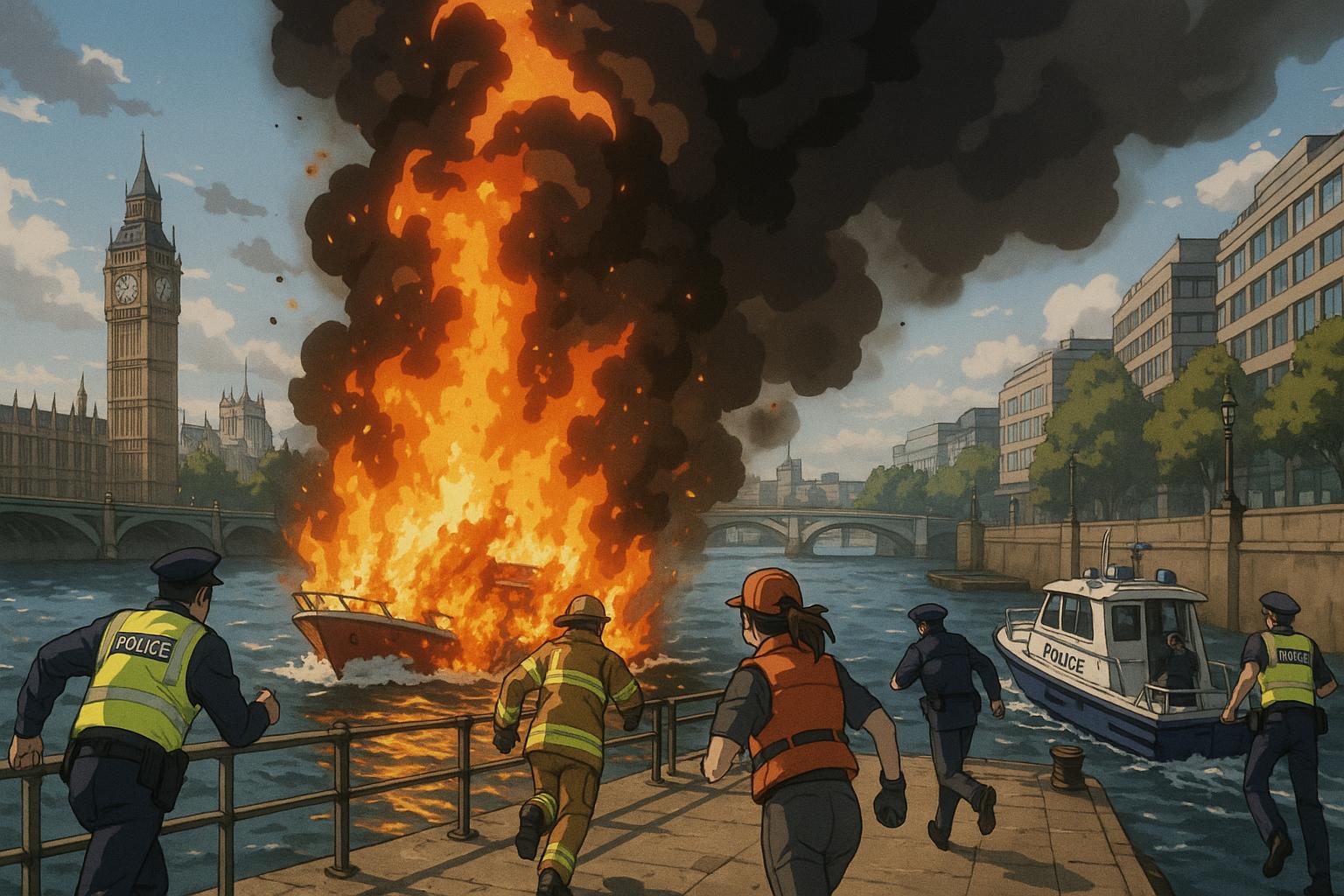Tragedy struck on the River Thames recently when a boat explosion injured nine people, including a critically injured baby who required airlifting to a specialist hospital. The incident near Lechlade, a charming spot along the Wiltshire border, transformed what began as a serene afternoon into a chaotic scene marked by towering flames and thick plumes of black smoke. Witnesses reported a swift response from both bystanders and emergency services, yet this unfortunate event raises significant concerns about safety standards within the growing sector of UK river tourism.
The explosion occurred in broad daylight, echoing the horrors of previous incidents that have similarly raised alarms about the safety of the waterways. Emergency services responded with impressive urgency; two air ambulances, multiple fire engines, and a coordinated effort from local police units quickly descended upon the area. Fortunately, locals played a crucial role in the rescue effort—evidence of community spirit amidst a moment of terror—as they assisted in pulling victims from both the vessel and the water, showcasing both bravery and a deeply ingrained instinct to help others in crisis.
Among the injured were individuals ranging in age from an infant to adults. Following the incident, emergency personnel transported casualties to various hospitals, including Bristol Royal Hospital for Children and John Radcliffe Hospital in Oxford. As investigations commenced, preliminary reports suggested that the explosion might have been triggered by an onboard fire linked to fuel or gas. Such a possibility casts a concerning light on the safety measures in place for residential and rental boats.
As river tourism gains momentum—evidenced by the increasing number of individuals choosing to explore or reside in canal boats and houseboats—this incident underscores an urgent necessity for enhancing existing safety regulations. The River Thames, a prominent fixture of British culture that stretches across several counties, sees hundreds of thousands of visitors annually. Yet, the infrastructure and regulatory frameworks governing these leisure activities frequently lag behind the industry's rapid expansion.
Historical context further elucidates the pressing nature of these safety concerns. A notable incident in August 2015 involved an explosion at Bray Lock in Taplow, injuring several individuals, including children, and prompting similar discussions on river safety standards. Likewise, past events, such as a fire on a London Duck Tours amphibious boat in 2013 that stranded many passengers amid flames, have revealed the fragility of safety in both recreational and tourist boating.
In light of the recent explosion, critical questions have emerged surrounding the adequacy of current safety protocols. Do boats—especially those offered for rental—undergo regular inspections? Are fire prevention systems universally adopted? Do tourists have the requisite knowledge of emergency procedures onboard? The lack of standardised safety measures could endanger not just those who live on the water but also the tourists who unwittingly place themselves at risk.
As authorities and industry stakeholders reflect on this tragedy, it is clear that the current landscape of river tourism requires urgent reevaluation. Policymakers must consider not only regulatory reforms to ensure stringent safety protocols but also how educational initiatives can better equip tourists with knowledge around potential risks associated with boat travel.
As the investigation unfolds, the potential ripple effects on the river tourism industry may lead to more pronounced regulatory changes, increased funding for emergency services, and improved safety practices. The River Thames is not merely a picturesque backdrop for leisurely days but a vital artery connecting communities and experiences. Prioritising the safety of everyone who interacts with these waters is paramount in maintaining public trust and ensuring the survival of this essential leisure sector.
Ultimately, while this horrific event represents a painful chapter, it may serve as a pivotal moment—a catalyst for lasting change that strengthens the safety measures governing the UK’s waterways, ensuring they are not just a source of beauty and enjoyment but also secure places for exploration and adventure.
Reference Map:
- Paragraph 1 – [1], [2]
- Paragraph 2 – [1], [3]
- Paragraph 3 – [2], [5]
- Paragraph 4 – [1], [6], [7]
- Paragraph 5 – [1], [2], [3]
- Paragraph 6 – [1], [5]
- Paragraph 7 – [1], [4]
Source: Noah Wire Services
